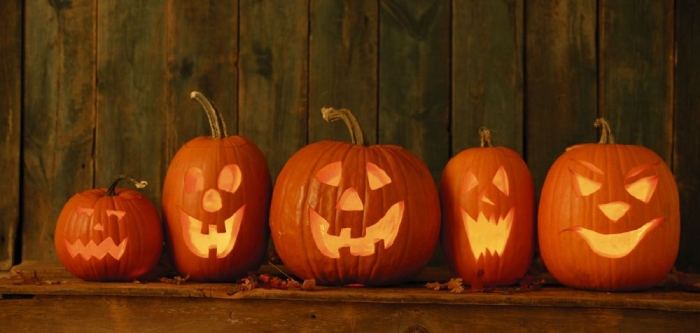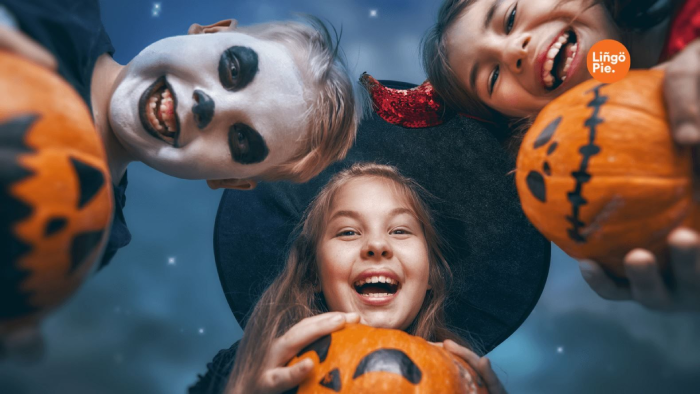Few symbols embody the essence of Halloween as brilliantly as the pumpkin. With its bright orange hue, carved grin, and the warm glow of candlelight flickering from within, the Jack-o’-lantern has become an iconic, which is part of the history of Halloween pumpkins.
Contents
Early pumpkin traditions

In ancient times, especially in regions with a strong agricultural focus, the harvest was a pivotal moment in the annual cycle. It marked the culmination of hard work and the assurance of sustenance through the forthcoming winter. In these early agricultural societies, the harvest was not merely a practical event but a spiritual one. Communities offered thanks to deities or nature itself for the bounty they received.
The pumpkin Halloween origin in ancient harvest festivals laid the foundation for the enduring symbolism of these fruits. They were not merely sustenance but symbols of abundance, a theme that would resurface in the Halloween celebrations of centuries to come.
These early traditions highlight pumpkin Halloween origin in our celebrations. From its humble beginnings as a staple of the harvest to its transformation into the iconic Jack-o’-lantern, the history of carving pumpkins for Halloween is a testament to its enduring significance.
Pumpkins in Halloween History

To begin with, you can start exploring the history of Halloween. The history of Halloween pumpkins is a captivating journey that spans centuries and continents. While the pumpkin’s role in Halloween is now iconic, its path to becoming a symbol of the holiday is a story of evolution and cultural fusion.
- Early Halloween in Europe: Halloween itself has deep roots in Celtic and European traditions. It was originally known as Samhain, a festival marking the end of the harvest season and the beginning of winter. During this time, the boundary between the living and spirit worlds grew thin.
- Carved Turnips and Gourds: In early Halloween celebrations, people in Ireland and Scotland often craved turnips and other root vegetables into lanterns. These lanterns were intended to ward off malevolent spirits and light the way for the living.
- The Emergence of Jack-o’-Lanterns: The transition from turnips to pumpkins as the preferred canvas for lantern carving is rooted in the migration of Irish and Scottish immigrants to North America, which started the history of Halloween pumpkins. In their new homeland, they found an abundance of pumpkins, making them a practical choice for creating Jack-o’-lanterns.
- The term “Jack-o’-lantern” itself has an interesting history. Jack-o’-lantern derived from the Irish folktale of “Stingy Jack”. That is about a man who outwitted the devil but found himself barred from both heaven and hell.
- Pumpkins in Contemporary Halloween: Today, the pumpkin has become synonymous with Halloween. Families visit pumpkin patches to select the perfect canvas for their own Jack-o’-lantern creations, and pumpkin carving has evolved into an art form.
The history of Halloween pumpkins as a symbol of Halloween is a testament to the way cultures and traditions evolve. From humble turnips to the vibrant pumpkins of modern Halloween, this journey reflects the rich history of carving pumpkins for Halloween and the enduring magic of the holiday.
Cultural Variations in Pumpkin Traditions

The history of Halloween pumpkins is not confined to a single culture or region; it’s a story of adaptation and reinterpretation that varies across the globe. Different cultures have embraced and adapted pumpkin traditions in unique and fascinating ways. This adds their own cultural flair to this beloved symbol of Halloween.
- United States – The Jack-o’-Lantern Tradition: In the United States, pumpkin carving is a cherished tradition. Families visit pumpkin patches to select the perfect pumpkin, which they then carve into Jack-o’-lanterns. These illuminated pumpkins line porches and windows, casting a warm and welcoming glow during Halloween.
- Ireland and the Celtic Roots – The birthplace of Halloween: They hold a special place in the history of Halloween pumpkin traditions. The original tradition involved carving turnips and other root vegetables into lanterns. Meanwhile, Irish immigrants in the United States adopted pumpkins as a more readily available canvas.
- México – Calacas and Calaveras: In Mexico, the Day of the Dead (Dia de los Muertos) celebrates deceased loved ones. This holiday features colorful sugar skulls, or “calaveras,” as decorative symbols. The tradition of using pumpkins is not as prevalent as in the United States. However, it reflects the cultural diversity of Halloween traditions.
- China – The Hungry Ghost Festival: The Hungry Ghost Festival in China includes the lighting of lanterns to guide spirits. The concept of illumination and honoring the spirit world resonates with the symbolism of Jack-o’-lanterns.
- Australia – Embracing Halloween: In Australia, Halloween has gained popularity in recent years, and the history of pumpkins for Halloween has shown in carving and decoration. Australians have adapted this tradition to their own cultural context.
These cultural variations in pumpkin traditions illustrate the flexibility and adaptability of the pumpkin’s symbolism. The pumpkin, with its universal appeal, bridges cultures and adds a touch of enchantment to celebrations around the world.
In conclusion, the rich history of Halloween pumpkins, from their ancient origins in harvest festivals to their modern role as Jack-o’-lanterns, illuminates a tradition that has endured across cultures, embodying the timeless spirit of Halloween.




